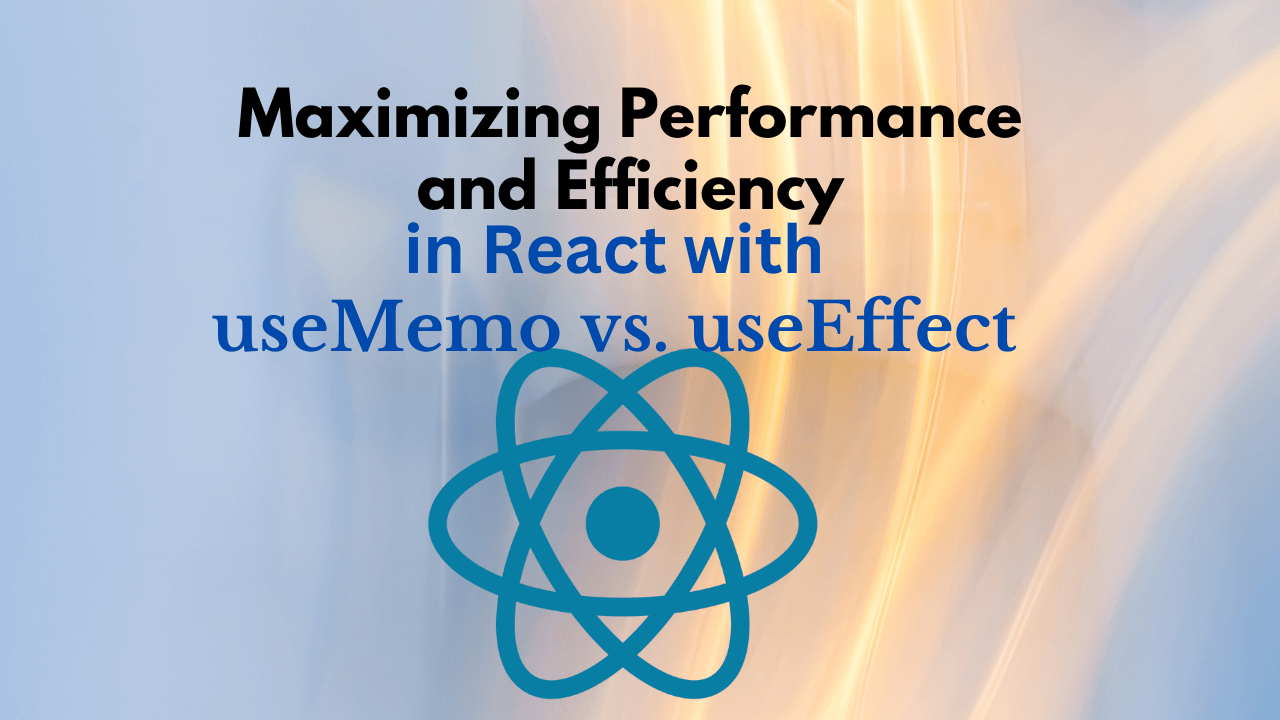Optimizing performance is key to delivering fast and responsive user experiences. Two commonly used hooks, useMemo and useEffect, play pivotal roles in achieving this goal. While they might seem similar at first glance, understanding when and why to use each can significantly enhance your application’s efficiency. Let’s delve into why useMemo should be your go-to choice over useEffect in certain scenarios.
Understanding the Hooks
Before we dive into the comparison, let’s quickly recap what each hook does:
useMemo: This hook is primarily used to memoize expensive computations. It caches the result of a function and returns the cached value whenever its dependencies remain unchanged. This helps in avoiding unnecessary recalculations, thereby optimizing performance.useEffect: On the other hand,useEffectis employed for handling side effects in functional components. It allows you to perform tasks like data fetching, DOM manipulation, or subscriptions. It runs after every render by default, but you can specify dependencies to control when it should execute.
The Case for useMemo
Memoizing Expensive Computations
Consider a scenario where you’re computing a complex value based on certain props or state. Without memoization, this computation would occur on every render, even if the inputs remain unchanged. By utilizing useMemo, you can cache the result and ensure that the computation only happens when necessary.
const expensiveValue = useMemo(
() => computeExpensiveValue(dep1, dep2), [dep1, dep2]);
Here, computeExpensiveValue will only be invoked if dep1 or dep2 changes, saving unnecessary calculations.
Improving Performance in Render Functions
In scenarios where you’re dealing with heavy rendering logic, useMemo can significantly boost performance. For instance, if you have a component rendering a large list based on some data, memoizing the list generation process can prevent it from being recalculated unnecessarily.
const memoizedList = useMemo(
() => generateList(data), [data]);
Now, generateList will only be called when data changes, optimizing rendering performance.
When to Stick with useEffect Hook
While useMemo shines in optimizing computations, there are instances where useEffect remains the more suitable choice:
Managing Side Effects
When dealing with operations like fetching data from an API, updating the document title, or subscribing to external events, useEffect is the appropriate tool. It allows you to separate side effects from the component’s rendering logic, promoting cleaner and more maintainable code.
Asynchronous Operations
useEffect is ideal for handling asynchronous tasks, thanks to its ability to work with promises and async/await syntax seamlessly. This makes it indispensable for scenarios where you need to wait for asynchronous operations to complete before updating the component.
Conclusion
In conclusion, both useMemo and useEffect are indispensable tools in the React developer’s arsenal. While they serve distinct purposes, understanding when to utilize each can significantly enhance your application’s performance and maintainability.
Remember, useMemo is your go-to choice for memoizing expensive computations and optimizing rendering performance, whereas useEffect excels in managing side effects and asynchronous operations. By leveraging these hooks effectively, you can build React applications that are not only fast and efficient but also scalable and maintainable.



